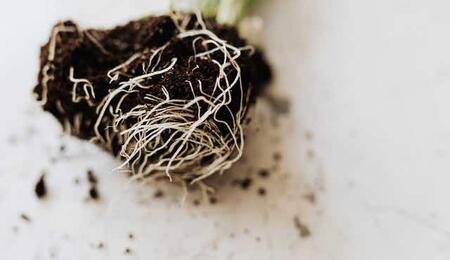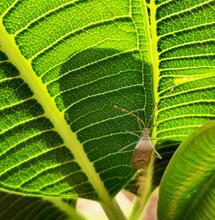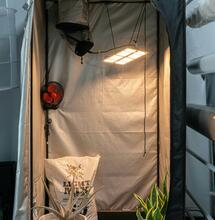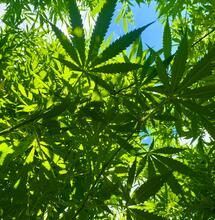How to Use Mycorrhizae

Mycorrhizae provide support during challenging conditions. Entire ecosystems would struggle to survive without the presence of mycorrhizae.
What are Mycorrhizae?
Beneficial organisms in the soil have emerged as essential for plant growth and nutrition. Various fungi and bacteria can assist plants in combating diseases and enhancing their nutrient uptake efficiency. Mycorrhizae are one type of these fungi.
The two primary types of mycorrhizae are ectomycorrhiza and endomycorrhiza. Ectomycorrhiza is predominantly located around tree roots. However, the most valuable mycorrhizal fungi for our purposes are the endomycorrhiza. The majority of the structure of endomycorrhiza exists within the plant itself, where it grows between the cell walls and root membranes, invasively occupying the root system.
While most mineral soils contain mycorrhizal fungi, they often exist in insufficient quantities to effectively colonize roots. This is particularly true for indoor growing situations. Substrates like coco coir and those made from peat moss or bark do not naturally encompass or contain mycorrhizae. Instead, growers must incorporate them manually.
How do Mycorrhizae Function?
Mycorrhizal fungi and plants engage in a symbiotic relationship that benefits both parties. This relationship starts when fungal spores germinate, producing threadlike microscopic structures known as "hyphae." The hyphae penetrate the plant's roots, colonizing them. Subsequently, the hyphae extend outwards into the growing medium, forming a web referred to as mycelium.
The mycelium significantly increases the root's mass and absorption capacity by hundreds of times. The hyphae are so minuscule that they can navigate around obstructions to access every part of the soil, unlike the plant roots. This special capability renders the hyphae exceptionally effective at gathering nutrients for the plants.
A single mycorrhiza's mycelium can also connect with other plants of different species, creating an underground network known as a common mycorrhizal network. In this setup, plants can "communicate" and transport sugar supplies to one another as needed.
These networks can be vast, with one plant linked to another species situated far across a forest. The mycelium can stretch for hundreds of miles, all packed into a small area. There may be as much as 200km of hyphae in every kilogram of soil! Because hyphae are so tiny, they are usually invisible. Occasionally, mycorrhizae will reproduce and send fruiting bodies up to the surface, resulting in mushrooms!
The plant nourishes the fungi by supplying excess sugar to the roots for absorption. The mycorrhizae rely on these sugars to survive underground since they cannot perform photosynthesis. In exchange, the plant gains better access to nutrients through the mycorrhizae and their mycelium. The mycelium acts like a massive sponge attached to the plant's roots, capable of absorbing more water and nutrients.
What are the Advantages of Mycorrhizae?
Mycorrhizae offer numerous advantages, including promoting healthier root growth, enhancing flowering, fruiting, and overall yield. They can also minimize fertilizer requirements and help plants withstand salt toxicity. Other benefits include delayed wilting and a reduced risk of root diseases and nutrient deficiencies. As a completely organic option, mycorrhizae can be applied generously every time you re-pot. They can assist plants in handling occasional extremes of moisture and temperature that they would otherwise find challenging.
Mycorrhizae are typically available for purchase in powder or liquid form. This versatile and user-friendly product can be utilized throughout your growth cycle, from taking cuttings to application as a top feed during soil or coco cultivation. It is compatible with coco, soil mediums, and various hydroponic systems, including DWC and aeroponics.
Mycorrhizae Usage Tips
Use it Early
Begin using mycorrhizae as soon as possible, as it takes a few weeks for the fungal spores to establish. Early application also means you'll need to use less to ensure your plants are colonized. Furthermore, this approach allows you to witness benefits sooner and results in sturdier, healthier plants over time. It is believed that using mycorrhizae with seeds can even enhance the germination rate!
Ensure Optimal Conditions
Mycorrhizal fungi thrive best when there is a balanced air-to-water ratio. Depending on the mycorrhizae species, the optimal pH range lies between 5.5 and 7.5. In terms of temperature, mycorrhizae perform optimally within the range of 68-73°F.
Choose Wisely
When selecting mycorrhizae, look for products that feature a blend of various species. Some species can withstand more alkaline or acidic conditions, creating a healthy mycorrhizal mix that adapts well to differing pH levels.
Mycorrhizae are particularly suited to indoor cultivation, effectively integrating into the growth cycle and providing advantages at every stage. You can utilize mycorrhizae alongside your usual feeding regimen, whether you opt for organic or non-organic products.
Organic Feeding
If organic growing seems like the right choice for you, there is a wide variety of complete organic feed options available. Organic methods can provide your plants with everything they require from the moment they are seeds until harvest, using natural techniques.
Organic Additives
Numerous organic additives exist, such as mycorrhizae, which can be utilized to enhance your plants' health and growth.
Organic Root Booster
Strong roots lead to robust plants. This formulation includes humic and fulvic acids as well as liquid seaweed. It is suitable for use in Cocoa, Soil, hydroponic, or aeroponic systems.
Organic PK Booster
High concentrations of phosphorus and potassium help regulate your plant's energy during the mid to late stages of flowering. This booster is made from organically sourced nutrients designed to yield resilient and healthy results.
Microbe Granules/ Microbe Tea
This organic super-additive features a carefully measured combination of natural microorganisms, enzymes, and beneficial fungi and can be applied throughout the growth cycle of the plant. It can accelerate germination, aiding young plants in the Vegetative phase, as well as enhance nutrient uptake and overall yield.
More From Soft Secrets:



.png)
